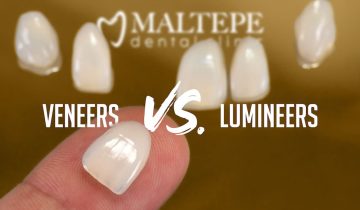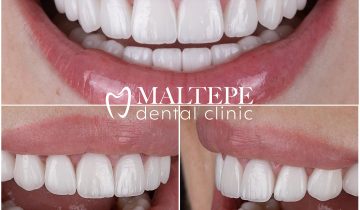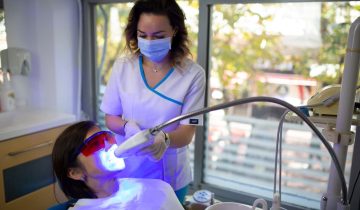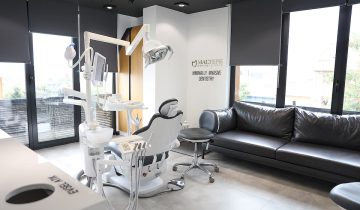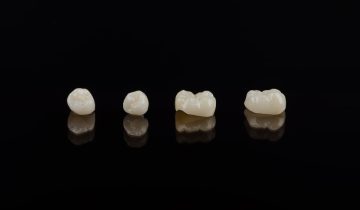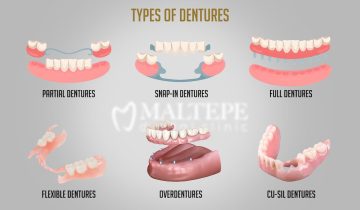Last updated on August 25th, 2023
Composite Inlays and onlays, also known as partial crowns, are effective alternatives to traditional fillings and full crowns. If the cusps of a tooth are severely decayed, fillings may fail to cover the area, and crowns can be too invasive and costly. Made from different materials than crowns or fillings, inlays and onlays are practical, inexpensive, and durable solutions.
Inlays and onlays are usually made from gold, porcelain, or composite materials. In this article, we will be focusing on the composite inlays and onlays, only. Here, you will find the key points about composite inlays and onlays such as the indications, procedural steps, and aftercare routine. There is also a FAQ section at the end of the post where you can find answers to a few further questions regarding this dental treatment.
What are Composite Inlays and Onlays?
Composite inlays and onlays are dental bonding materials made from zirconia/silica and plastic materials. Similar to other dental restorations, the purpose of composite inlays and onlays is to restore the natural tooth affected by the cavity.
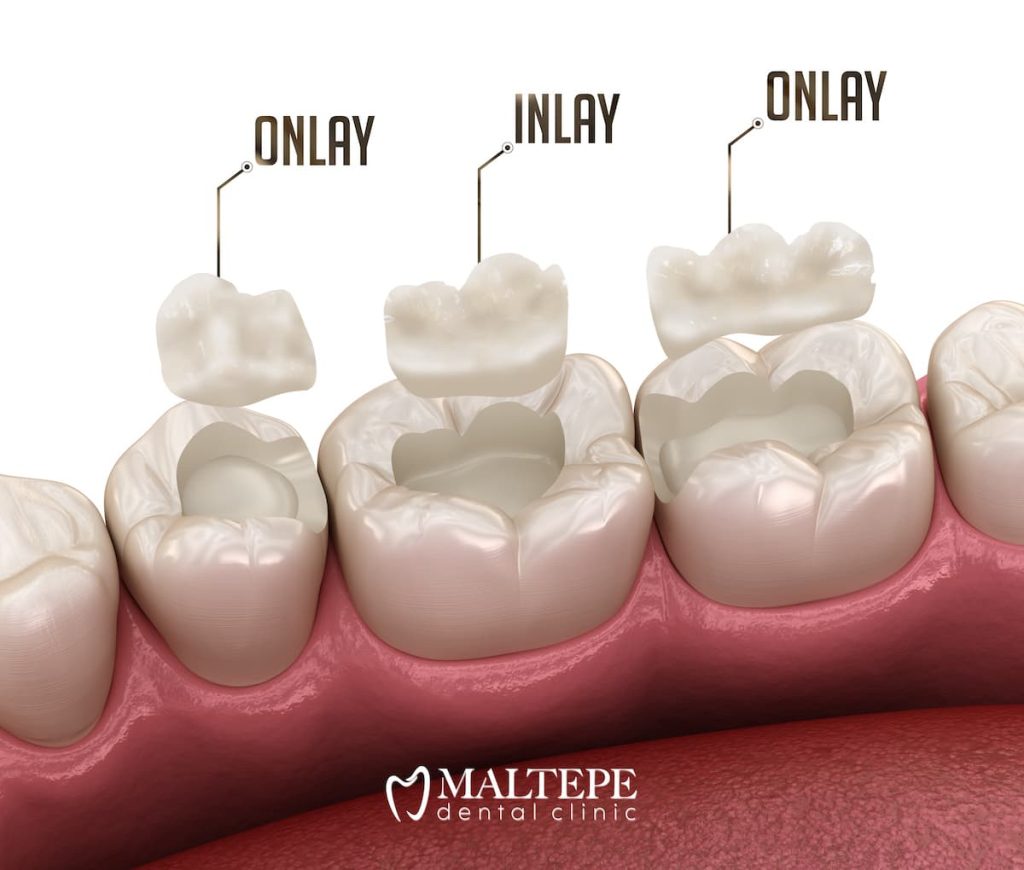
Patients are usually painfully aware of their dental problems, and thus consider getting this treatment when they feel a toothache, sensitivity, or when they see visible damage on their teeth. Recently, more and more people are opting for composite inlays or onlays as a part of cosmetic dentistry to restore their beautiful smile, while at the same time getting rid of pain and sensitivity.
Benefits of Composite Inlays and Onlays Compared to Other Restorative Options
According to a review study published in The Journal of Conservational Dentistry 2018, composite inlays come with the added benefit of:
- Reduced polymerization shrinkage
- Improved fracture resistance
- Improved wear resistance
- Better contouring of proximal surfaces
- Occlusal contacts
- Teeth Strength increase
- The teeth look fit, smooth, and natural
- Ease of cleaning teeth
- Teeth stability increase
- Prevents decay of the tooth for a long time
- Teeth lifespan increase
Compared to dental fillings, composite inlays, and onlays cover a larger area of the tooth, which conserves more of the existing natural tooth structure. Also, the color of composite inlays and onlays blends more naturally with the tooth as compared with dental fillings. However, the cost of this treatment tends to be higher than fillings. Additionally, the time required might be longer since dentists usually complete the inlay/onlay treatment in two separate appointments.
Composite inlays and onlays are often compared to dental crowns. As you might already know, crowns cover the whole tooth, as this is a better option for those having no natural cusp on the tooth that can be filled. However, inlays/onlays are applied on the cusps of the tooth in varying shapes and quantities which are measured by the impression taken from the patient’s tooth. As for price, crowns are usually a bit more expensive than composite inlays and onlays.
The Procedure for Getting Composite Inlays and Onlays
The procedural steps of composite inlays and onlays are similar to other inlay/onlay treatments where different materials are used. Here are the most common steps followed by dental professionals during the application of composite inlays and onlays:
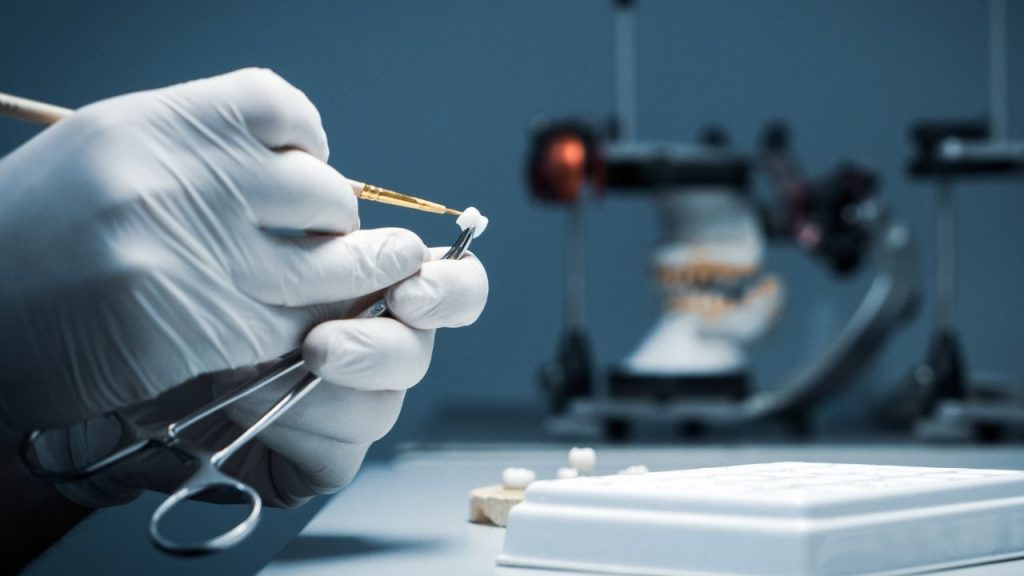
- The patient goes to the first appointment and the dentist applies local anesthesia to the tooth.
- The dentist removes caries and decayed parts from the tooth.
- Once the area is free from caries and tooth decay, the dentist takes an impression of the tooth.
- Then the dentist puts in a temporary onlay or inlay, depending on the case, and the patient is given a second appointment.
- Meanwhile, the composite inlay or onlay is custom-made in a laboratory. Note that some dental clinics have an in-house dental laboratory, which facilitates the manufacturing as well as increases the quality of the work.
- Once the composite inlay or onlay is ready, the patient goes to a second appointment. This time, the dentist removes the temporary inlay/onlay, and adheres to the permanent ones using strong adhesives.
- Finally, the dentist checks the alignment of the teeth to ensure a correct and comfortable bite.
What Are the Advantages of Composite Inlays and Onlays Over Porcelain Inlays and Onlays?
- Conservative preparation: Composite inlays/onlays require less tooth structure to be removed than porcelain inlays/onlays, resulting in a more conservative tooth preparation.
- Ease of repair: In the event of damage, composite inlays/onlays can be easily repaired, whereas porcelain inlays/onlays may need to be completely replaced.
- Aesthetics: Composite inlays/onlays can be color-matched to natural teeth, resulting in a more aesthetic restoration compared to porcelain inlays/onlays.
- Lower cost: Composite inlays/onlays are generally less expensive than porcelain inlays/onlays.
- Bonding: Composite inlays/onlays can be bonded to the tooth structure, creating a strong and durable bond that can improve the overall strength of the tooth, while porcelain inlays/onlays require cementation.
- According to a study published in the Journal of Conservative Dentistry in 2010, composites have a greater capacity to absorb compressive loading forces and reduce impact forces by 57% more than porcelain.
- Composite materials transfer masticatory forces considerably less than porcelain and porcelain-fused-to-metal restorations.
- Due to the similar composition of the luting cement and composites, the marginal adaptation of composites is better than that of ceramics.
What Are The Indications For Composite Inlays And Onlays?
According to a review study published in The Journal of Dental Health Oral Disorders & Therapy 2015, the indications for having an inlay or an onlay are as follows:
- The patient is seeking an excellent aesthetic result.
- The patient is practicing proper dental hygiene.
- The patient will not have any allergic reactions to the filling (amalgam)
- Patient is suffering from loss of hard tissue in their mouth.
Caring For Your Composite Inlays And Onlays
Dentists usually advise you not to eat or drink anything before the numbness goes away in your mouth. It is not only for composite inlays and onlays, but a general routine in order to avoid tooth damage as well as some other potential risks.
In the long term, the patient should keep in mind that the composite inlay and/or onlay covers only part of the tooth. This means the remaining natural tooth is still prone to staining and bacteria as much as the other teeth. Therefore, adhering to regular tooth brushing and flossing is of great importance in order to maintain optimal oral health and a beautiful smile.
What Is The Expected Longevity Of Composite Inlays And Onlays?
According to a study published in The European Journal of Dentistry 2022, the long-term clinical results of composite inlays and onlays was a respectable 85% success rate (with only a 15% failure rate) at the end of a 9-year follow-up.
FAQs
Here are the most common questions that people ask about composite inlays and onlays.
Can I Convert My Amalgam Fillings To Composite Fillings?
Yes, dentists can remove your old amalgam fillings and replace it with inlays or onlays.
Can I Get An Onlay Instead Of A Crown?
If a minor restoration is needed to fix the decayed cusps of a tooth, then a crown might be too excessive. Therefore, your dentist might advise you to get inlays or onlays.
Is It A Good Idea To Replace Amalgam Fillings With Inlays/Onlays?
Yes, it is. Amalgam fillings can expand and contract due to hot and cold drinks, which can lead to various problems.

